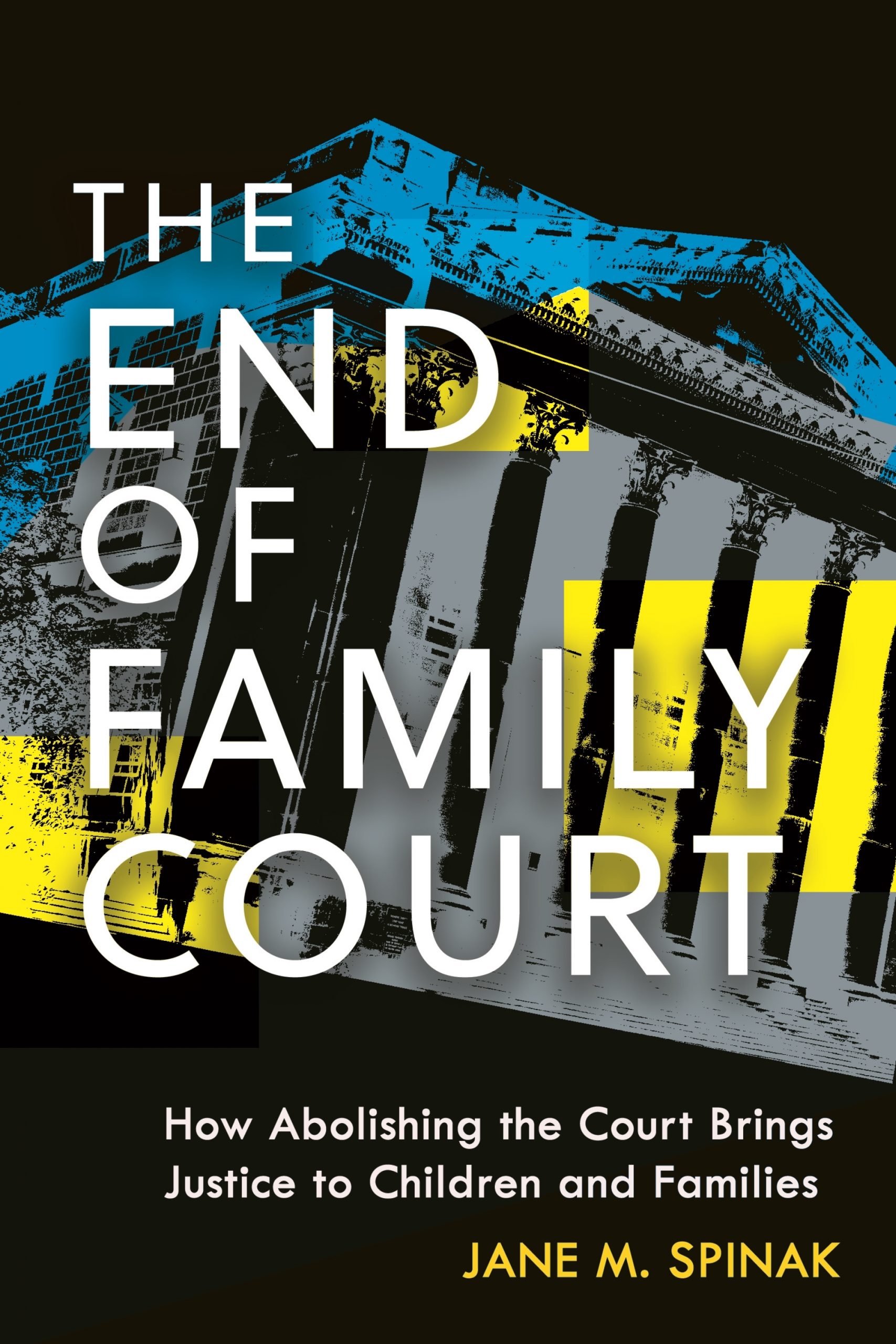The family court has been a central actor in the history of state intervention in family life, driven by the belief that it could solve family problems, that it could do good. The consequence is that by trying to do good, it fails to do justice and often does great harm. The procedures and policies of modern family court reflect some of this country’s worst afflictions—including racism and a deep mistrust and disdain of lives lived in poverty. The time has come to stop trying to fix or reinvent the court; the time has come to take the steps necessary to abolish it.
In the spring of 2020, family regulation reforms began to sweep the country. The state of New York eliminated the term “incorrigible” from its status offenses statute, encouraged by the Brooklyn-based Girls for Gender Equity, which lobbied the legislature under the banner “Encourageable not Incorrigible.” Community activists also spurred New York to amend its child abuse and neglect reporting law, raising the standard of evidence from “some credible evidence” to “a fair preponderance of evidence” to initiate a court petition for child maltreatment and reducing the impact of “hotline report” records. During that same spring, Illinois governor J. B. Pritzker announced a plan to close five state juvenile detention centers that were “too punitive and too ineffective” and deemed to “exacerbate [the] trauma . . . [and create] a culture of instability and violence.” Instead of large detention facilities “rife with racism,” in Pritzker’s words, juveniles would be sent to residential treatment centers, with dorm-like accommodations and wraparound services. California governor Gavin Newsom adopted a similar plan, moving to close all state juvenile prisons and keeping youth closer to home in county facilities by July 2021. And in reaction to staff abuses in Philadelphia’s youth residential and group home facilities, a new youth ombudsperson office was created to investigate complaints.

These changes are likely to reduce the harm to some youth and families. But they are essentially back-end reforms, leaving in place the structures that have regulated marginalized families for more than a hundred years. Not labeling a youth “incorrigible” without eliminating status-offense jurisdiction altogether fails to address why truant, runaway, or “misbehaving” youth who haven’t broken the law are brought to court at all. Closing juvenile jails and prisons yet sending youth to other institutions doesn’t reckon with whether most of the young people held should ever be prosecuted or placed away from home, even with an appointed ombudsperson (and additional bureaucracy) to investigate any maltreatment. And providing for a fairer system of sealing records is a very small step to confront the needless investigation of millions of families yearly through a mandatory and often anonymous reporting system. Why should thousands of these families still find themselves in family court and hundreds of thousands of their children be placed in foster care? The reforms are not intended or designed to dismantle the deeply embedded and failed approaches to “helping” families through the family court. And they certainly don’t question whether family court should continue to exist as a mechanism to manage families.
The Great Idea of creating a therapeutic court with beneficent judges who will solve the problems of families will remain the foundational premise of the family court system no matter how big or small that court is. Neither multiple reinventions over the past century, nor layering procedural protections atop its hearings, have diminished the interventionist spirit of such a court to save children and, if they can’t be saved, to punish them or their families through extreme intrusion, surveillance, separation, or incarceration. At the same time, the family court has neither the authority nor the inclination to confront the structural barriers that bedevil the marginalized families appearing there. It focuses instead on the specific child, youth, or parent before it as the problem to be fixed, reinforcing the belief that the court, by fixing the person, will fix the larger systemic problem.
An abolitionist approach, in contrast, embraces different premises about family court. The first is that a court is not the place to solve problems but instead—and only when necessary—is the forum to adjudicate disputes. The idea of a therapeutic court has blurred the distinction between actual legal controversies and the social problems families face—like poverty and systemic marginalization—that cannot be addressed by a court process. Yet massive surveillance and regulatory systems are primed to send families into court not because there is an adversarial legal dispute but because the court has been designated as the place to manage marginalized families and their problems.
Second, an abolitionist approach rejects trying to improve this kind of court. The family court has been “reformed”—or, more honestly, reinvented and readjusted—repeatedly since its birth as the juvenile court. Yet those adjustments have failed to improve either the processes or the outcomes for most of the litigants and have instead caused significant harm. The U.S. Second Circuit Court of Appeals once cautioned against using the “best interests of the child” standard as a justification for inappropriately intervening in family life. The court feared that the “best interests” standard glorified doing good while ignoring C. S. Lewis’s warning that “[o]f all tyrannies a tyranny sincerely exercised for the good of its victims may be the most oppressive. . . . [T]hose who torment us for our own good will torment us without end for they do so with the approval of their own conscience.” The family court’s belief in its ability to do good has salved its conscience and prevented it from confronting the harm that even well-intentioned do-gooding has caused.
More from our decarceral brainstorm
Every week, Inquest aims to bring you insights from people thinking through and working for a world without mass incarceration.
Sign up for our newsletter for the latest.
Newsletter
The mission to do good has also thwarted the court from recognizing how it has helped to drain resources out of communities and into the court or the government agencies that report to the court. The effect is twofold: Communities in great need are underserved by trusted supports; and the structural inequities that might be at least partially addressed by those community resources are ignored. Court observers have identified this problem since the court’s founding. Worse still, those inequities are transformed into questions of individual responsibility. The effect here is even greater. By structuring responses to marginalized families around court processes that focus on blame and intervention, the grossest inequalities that propel those families into court are ignored.
My colleague, law professor Kendall Thomas, once said that “abolition is looking at problems from the perspective of the governed.” From the perspective of children and families who find themselves in family court, they want a different solution to the issues that got them there. Embracing their voices is an integral part of the solution. I draw on legal scholars Lani Guanier and Gerald Torres’s conception of demosprudence, which emphasizes “the role of culture shifting, not just rule shifting, in producing durable social change.” Demosprudence “represents a philosophical commitment to the lawmaking force of meaningful participatory democracy.” Thus the goal of abolishing the family court must be consonant with the experiences and agendas of those most deeply harmed. I doubt we would even be talking about abolition of the family court without the truth-reckoning brought about by impacted youth and parents. This culture-shifting has meant that, rather than relying on traditional advocates and action-oriented academics—like myself—to lead, impacted youth and parents “integrate lawyers not as leaders but as fellow advocates . . . in producing durable social and legal change.” Many of the solutions I propose for change have been built on the advocacy of those activists.
An abolitionist mindset requires us to let go of our historical beliefs. Each time proposals to move significant authority out of the court have been proposed, judges have warned of the dangers to families of diminishing judicial power. When various reformists and policymakers recommend replacing judicial authority and jurisdiction—especially with the development of community-based, voluntary, and comprehensive supports—family court judges have obstinately responded with “we may not always get it right and we might do some harm but we’re better than any other alternative.” Law scholar Brendan Roediger points out how this is “a defensive idealism or reformism [that] demands its own replication,” and if “we are serious about disrupting the generational reproduction of the racial social order,” then we must liberate ourselves from our allegiance to the governing structures we know, including these courts. This call is eerily similar to law scholar Francis Allen’s 1964 admonition that fundamental solutions were not to be found in the juvenile court but “in the direction of integrating our alienated populations into full participation in the social, economic, political and cultural life of our communities.”
Finally, an abolitionist mindset allows for interim measures that are not “reformist” in nature—those intended to strengthen and improve the current system—but represent steps necessary for the deconstruction of the regime. Every step in the process has to be scrutinized to see if in fact it reduces surveillance, investigation, and intervention. This vigilance is essential because, as Roediger notes, “Reforms, no matter how serious or how imaginative, can never change the nature of the arrangement, which is control.” To recognize the depth of that control—to be consonant with the experiences and agendas of those children and families most deeply impacted—it is not possible to replace the court with a new, better version. Instead, we must use a radical imagination first to shrink and then to abolish the court. And then we must use a radical imagination to consider how to support children and families without controlling them so they achieve full democratic participation.
Excerpted from The End of Family Court: How Abolishing the Court Brings Justice to Children and Families by Jane M. Spinak, reprinted with permission from NYU Press.
Image: Uliya Kurilova/Unsplash

